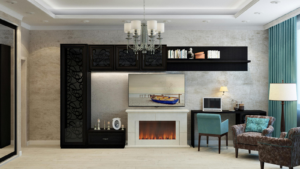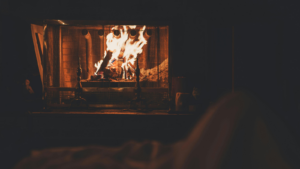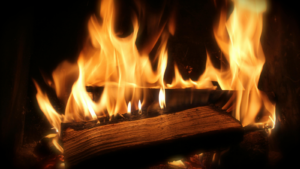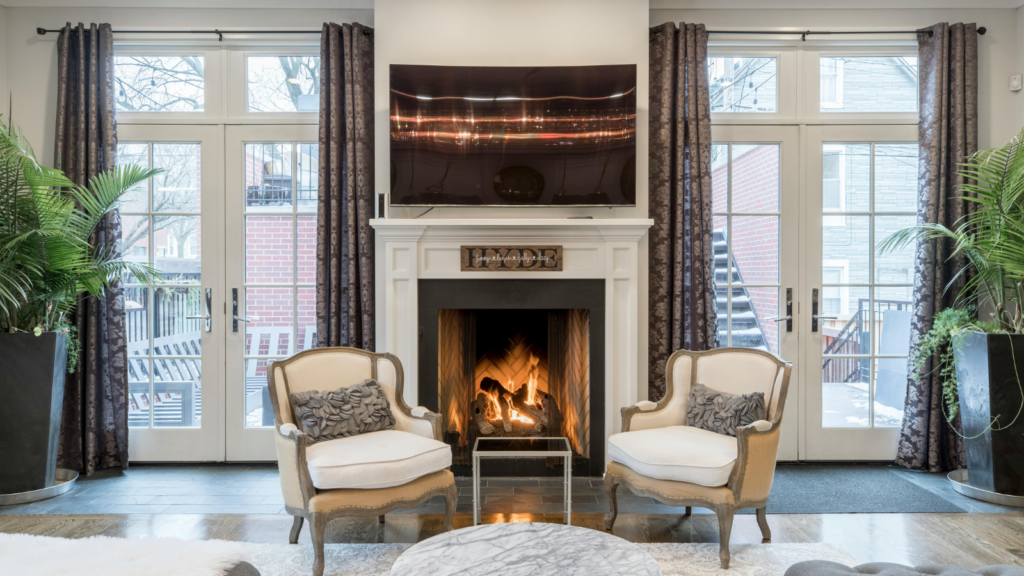
As autumn leaves start to fall and winter’s chill sets in, there’s nothing quite like the cozy warmth of a wood burning fireplace. It’s not just about the heat, though.
So, whether you’re planning a renovation or simply dreaming of your ideal home, let’s stoke the fire of your imagination.
Wood Burning Fireplace Designs
Wood burning fireplace designs exude a timeless charm. This section dives deeper into the aesthetics, materials, and craftsmanship associated with these artifacts of warmth and comfort.
Traditional vs. Modern Aesthetics
Traditional wood-burning fireplace designs strike a chord with their rustic allure. Think large hearths, ornate mantels often carved from solid wood or cast iron, and a welcoming crackling fire. They become the picturesque heart of the home, bringing a sense of nostalgia and warmth.
Conversely, modern fireplace designs champion sleekness and minimalism. They commonly boast clean lines, geometric shapes, and use contemporary materials like steel or glass. Glass fronts, in particular, offer a panoramic view of dancing flames, adding to their mesmerizing effect.
Materials and Craftsmanship
Material selection proves crucial in the creation of eye-catching wood-burning fireplace designs. Traditional designs favor materials like brick, stone, or rustic wood, exuding a warm, natural charm. Craftsmanship is often exceptional, with hand-carved mantels and carefully laid stones.
Modern designs, on the other hand, frequently use materials like glass, steel, or polished concrete. They can be frameless or framed, inset or wall-mounted, catering to diverse tastes and interior designs. The craftsmanship in modern designs lies in their streamlined construction, requiring precision and technical skill.
In every stroke of the chisel or turn of the wrench, the charm of wood-burning fireplaces lies in their designs. Each piece, traditional or modern, crafted with varying materials, stands testament to distinct aesthetics and the skill of the craftspeople. Wood-burning fireplaces, far from being mere sources of heat, transform into enthralling, design-centric elements of home decor.
Key Elements of Wood Burning Fireplaces

Drawing from the variety of styles explored in the previous section, this section offers further depth, focusing particularly on the central features of the fireplace: the hearth and the mantel. Significantly, these essential aspects embody craftsmanship and material beauty, serving both functional and aesthetic purposes in wood burning fireplace designs.
The Hearth and Its Importance
Serving as the basis of any wood burning fireplace, the hearth plays a dual role of functional essentiality and visual appeal. It houses the actual fire and withstands extreme temperatures, making it essential for safe and successful wood burning.
Mantel Designs and Functionality
The fireplace mantel, coalescing design with utility, crowns the fireplace setup. It gives homeowners a canvas for personal expression, allowing for individual design elements like artwork, knick-knacks, or mirrors to be displayed above the warming blaze.
Maintenance Tips for Wood Burning Fireplaces

Proper maintenance not only extends the lifespan of a wood burning fireplace but also enhances its efficiency and safety. This section elucidates various tried-and-tested maintenance tips for wood burning fireplaces, reinforcing the information discussed in previous sections.
Routine Cleaning and Inspection
Regular cleaning and inspection of a wood burning fireplace play a pivotal role in its safe operation. Ash build-up, for instance, can interfere with proper ventilation. Maintaining a small layer of ash aids in fire ignition but excessive accumulation can stifle a fire.
Long-Term Care and Upkeep

Long-term care for a wood burning fireplace revolves around preventative measures and diligent maintenance practices that enable it to operate efficiently over extended periods. Preventative measures involve using only seasoned hardwood (like oak or maple), which burns cleaner, reducing the accumulation of creosote. Clearing the chimney annually, particularly before the winter season, represents another vital preventative measure.
Must Know
So, there’s no denying the charm and versatility of wood burning fireplace designs. They’re a testament to craftsmanship and careful material selection, with a keen eye on essential elements like the hearth and mantel. Safety is paramount, with a need for proper ventilation and adherence to chimney regulations. Eco-friendly designs and modern technology are shaping the current trends, providing efficiency and sustainability. And let’s not forget maintenance.
